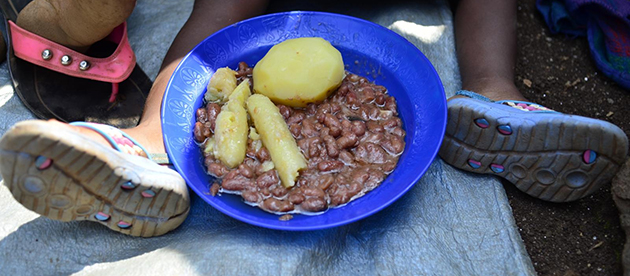The idea that agriculture must not only feed us enough, it must also feed us well, has gained much traction on the development and research agenda in recent years. As with gender before it, nutrition has become part of the mainstream research agenda, not least within the CGIAR, which mainstreamed nutrition into most of its crop breeding programmes earlier this year.
One of those crops is the common bean.
Led by the International Center for Tropical Agriculture (CIAT) and the CIAT-coordinated Pan-Africa Bean Research Alliance (PABRA), research into common bean improvement is underway in 29 countries throughout sub-Saharan Africa.
Healthy, versatile and affordable, beans are an important crop for household food security. They provide as many as three harvests a year, dry beans can be stored for long periods without deteriorating, and provide food at all stages of their growth – leaves, green pods, green seed and dried grains.
In sub-Saharan Africa, where undernutrition remains a significant problem, particularly among women and children, beans are a major staple for more than 144 million people in rural and poor urban communities.
Around a fifth of the population suffers from iron deficiency anaemia, with low iron intake linked to high rates of maternal mortality, and low zinc associated with stunting in children. The fight against malnutrition starts with the diet.
Producing beans with higher levels of iron and zinc can help address malnutrition which affects the poorest people…
————————————
Read the full blog on the Grain Legumes blog. This blog post, written by Robin Buruchara, CIATs Regional Director for Africa,

